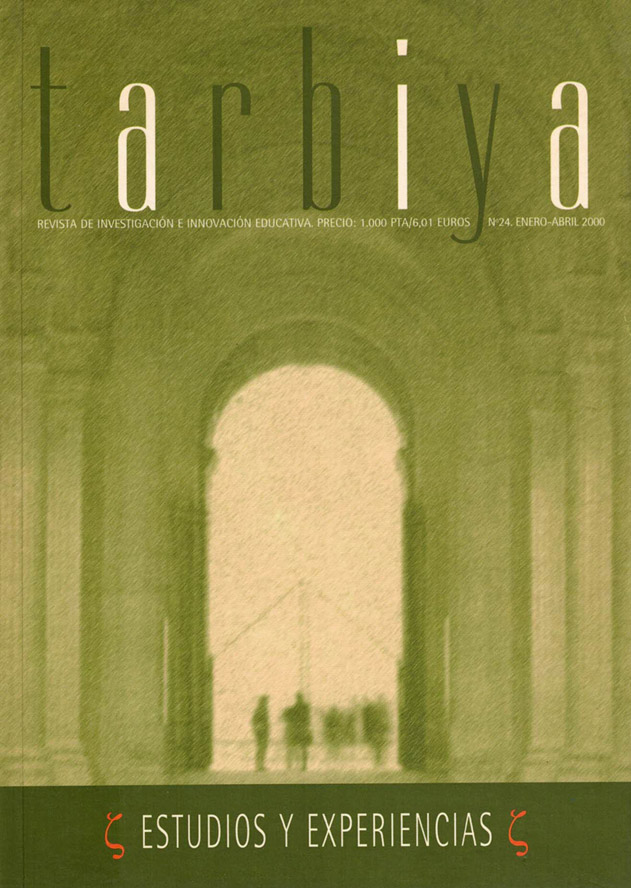Keywords:
Press, Newspapers, Education, Meaningful learning, Syllabus, Secondary schools, The mediaAbstract
In this paper we tried to highlight the importance of press as a powerful tool when it is used in the class with didactic purposes. The press takes the outside world information into the classroom. It is a link between school and society. Therefore, it becomes an important source of motivation for the pupils. It increases their desire for knowledge, for better judgement, their desire to present ideas with fluid ity. In this paper we describe the media influence on everyday life. Lastly, some activities with newspapers in the class are proposed as well asan analysis to assess the level of achievement of these general educational objectives in Secondary School.
Downloads
References
ALONSO ERAUSQUIN, M. ( 1990). Lectura integral del periódico. Programa Prensa-Escuela. Madrid: MEC. 121-124
BARREIRO, X.L. (1998). El análisis político en la prensa diaria. Barcelona. Ed. Ronsel.
CEBRIÁN HERREROS, M. (1990). Análisis general de un periódico: estructuras, contenidos y tratamiento. Programa Prensa-Escuela. Madrid. MEC. 125-142
CORZO, J.L. (1986). Leer periódicos en clase. Una programación para E.G.B., Medias, Adultos y compensatoria. Madrid: Popular.
FERRÉS, J. (1994), Televisión y educación. Barcelona: Paidos
GARCÍA GALINDO, J.A. (1990). En torno al tema Prensa-Escuela. Programa Prensa-Escuela. Madrid: MEC. 255-258
GARCÍA NOVELL, F. (1986). Inventa el periódico. La prensa en la escuela. Zero: Madrid.
GATS, Q. Y BERNSTEIN, T.M. (1961). Headlines and Deadlines. Nueva York: Columbia University Press.
GUILLAMET, J. (1988). Conocer la prensa. Introducción a su uso en la escuela. Barcelona: Gustavo Gili.
GRIJELMO, A (1997). El estilo del periodista. Madrid: Taurus-Santillana.
HANSEN, J. y PEARSON, P.D. (1983). An instructional study: Improving the inferential comprehension of good and poor fourth-grade readers. Journal of Educational Psychology, 75, 821-829
LEÓN, J.A. y MARTÍN, A. (1993). El título como recurso didáctico. Comunicación, Lenguaje y Educación, 19-20, 159-170.
LEÓN, J.A., MARTÍN, A., Y PEREZ, O. (en prensa). Actitud relativista ante la lectura de dos noticias contradictorias. Infancia y Aprendizaje.
LEÓN, J.A., MARTÍN, A., PÉREZ, O., SERRANO, R., Y LÓPEZ, A. (1996). La comprensión de la prensa en la enseñanza secundaria y universitaria. Madrid: UAM-CIDE.
LEÓN, J.A. (1996). Prensa y Educación. Un enfoque cognitivo. Buenos Aires: Aique
SÁNCHEZ, E. (1993). Los textos expositivos. Estrategias para mejorar su comprensión. Madrid: Santillana.
VIDAL-ABARCA, E. (1990). Un programa para la comprensión de ideas principales de textos expositivos. Infancia y Aprendizaje, 49, 53-71.
VIOOUE, J. (1984). La utilización de la prensa en la escuela. Madrid: Cincel
ZABALA, A. (1993). los enfoque didácticos. En C.Coll y Cols. El constuctivismo en el aula. Barcelona: Grao (Biblioteca de aula, 2), pp. 125-161.
ZABALA, A. (1989). El enfoque globalizador. Cuadernos de Pedagogía, 168.

